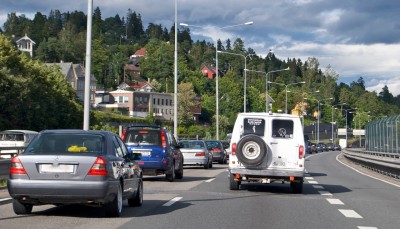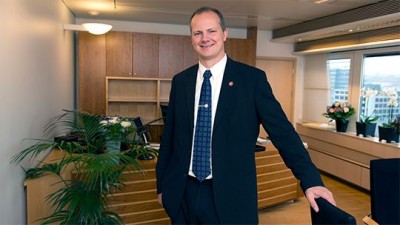Norway’s new transport minister says he wants to steer more extra funding to the country’s urban areas, to relieve traffic congestion where the most people actually live and work. Ketil Solvik-Olsen is thus charting a new course in Norwegian transport policy, which for decades has favoured outlying areas in an effort to keep them populated.

Solvik-Olsen told newspaper Dagens Næringsliv (DN) on Thursday that he wants to expedite major road improvement projects in and around the cities. That may include expansion of the heavily trafficked E18 highway between Lysaker and Ramstadsletta just west of Oslo and the E39 highway into Stavanger. Both are regularly plagued by the biggest traffic delays in the country, and relieving that, Solvik-Olsen says, can have enormous economic benefits.
“Yes, (we want) more funding for the most heavily populated areas,” said Solvik-Olsen of the conservative Progress Party (Fremskrittspartiet, Frp), which has won government power for the first time. “You’ll be seeing a government that has more focus on the value of the actual use of the transport projects.” He’s keen to fund both road and rail projects to ease congestion.

Norwegian politicians have long earmarked hundreds of millions of kroner for bridge and tunnel projects in remote areas, often used by just a handful of vehicles a day, while refusing to fund needed road improvements in the cities. The politicians, especially those from the rural-oriented Center Party that had control of the transport ministry for the past eight years, have thus pitted the cities against the outlying districts, feeling it’s more important to fund improvements in the districts to create jobs and make them more attractive.
Meanwhile, though, people have continued to move to the cities to study or work. Traffic congestion in and around Bergen, Oslo and Stavanger, for example, has become worse than ever, even though commuters are setting new records in use of trains and other public transit alternatives to sitting in their cars. “Commuter traffic in the most heavily populated areas is part of folks’ everyday life,” Solvik-Olsen told DN. “That’s what we’re concerned about.”
Research reveals priority imbalance
Professor Sverre Knutsen of the Norwegian business school BI has studied Norwegian transport investment for years and confirms that outlying areas have received a disproportionate share of transport funding and projects. “The most populated areas haven’t been a priority since World War II,” Knutsen told DN. He agrees that far too little public funds have been spent on infrastructure investment in central areas.
The professor said that history shows how maintenance of roads in and around the Norwegian cities, and of roads connecting populated regions has especially been neglected by district-minded politicians. These same politicians also have a record of earmarking road funds for their home districts while insisting they merely want to spread taxpayers’ money over the entire country.
Solvik-Olsen himself comes from Rogaland County, where Stavanger is located, and now lives in Oslo, so he could also be accused of favouring his home districts with the E39 and E18 highway improvement projects. He’s likely to be forgiven by the hundreds of thousands of commuters stuck in traffic jams every day, but opposition already has surfaced to the plans for expanding the E18 west of Oslo. Some Oslo politicians claim the capital can’t absorb more cars driving into town, and that such road improvement projects collide with environmental policies aimed at reducing personal car use.
Marit Arnstad of the Center Party, who served as transport minister until losing last month’s election, still claims that it’s wrong to prioritize central areas. She told DN that around 50 percent of state transport investment already goes to projects in southeastern Norway, and that projects shouldn’t only be judged by the value of their use.
newsinenglish.no/Nina Berglund

